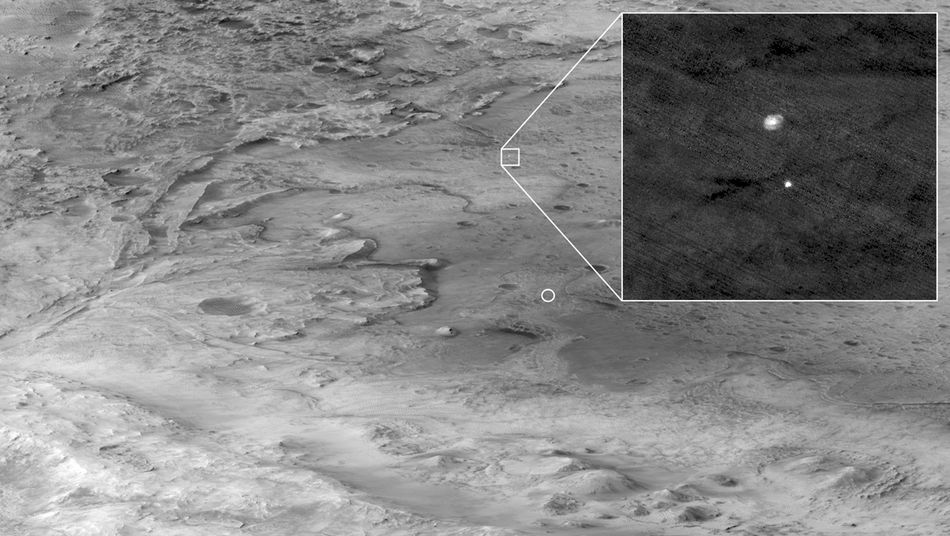Talk about a unique satellite image.
A crucial NASA satellite orbiting Mars, the Mars Reconnaissance Orbiter, spotted the car-sized Perseverance rover parachuting through the Martian atmosphere on Thursday, en route to a successful, though dramatic, landing. The space agency released the shot on Friday.
“Every picture tells a story,” NASA tweeted. “This one captures me in midair, floating over Mars while hanging from my parachute during the final #CountdownToMars.”
In the image below, the square shows an enlarged view of the parachuting rover, and the small white circle depicts where the rover ultimately landed in the Jezero Crater. The satellite orbited some 435 miles above Perservance when it snapped the image.

Parachutin’ down.
Image: NASA / JPL-CALTECH / UNIVERSITY OF ARIZONA
The parachuting was a major part of an ambitious landing sequence dubbed the “seven minutes of terror.” Hundreds of things have to go perfectly for the landing to succeed, including a rocket-powered “Skycrane” that hovers above the surface and ultimately lowers the rover to the ground.
But if the parachute fails earlier in the descent, everything fails.
“The parachute is one of the most important single point failures for entry, descent, and landing, because there’s only one,” Swati Mohan, a NASA engineer who managed the rover’s descent, told Mashable. “If there’s any tiny hole, tiny nick, the whole thing disintegrates and you’re left pummeling to the ground in a matter of seconds after that. If the parachute doesn’t work, it’s completely game over.”
See Also: The space race forged immortal rock and roll guitars
Now safely on the Martian surface, the Perseverance rover will scour a dried-up river delta for potential signs of past microbial life.
